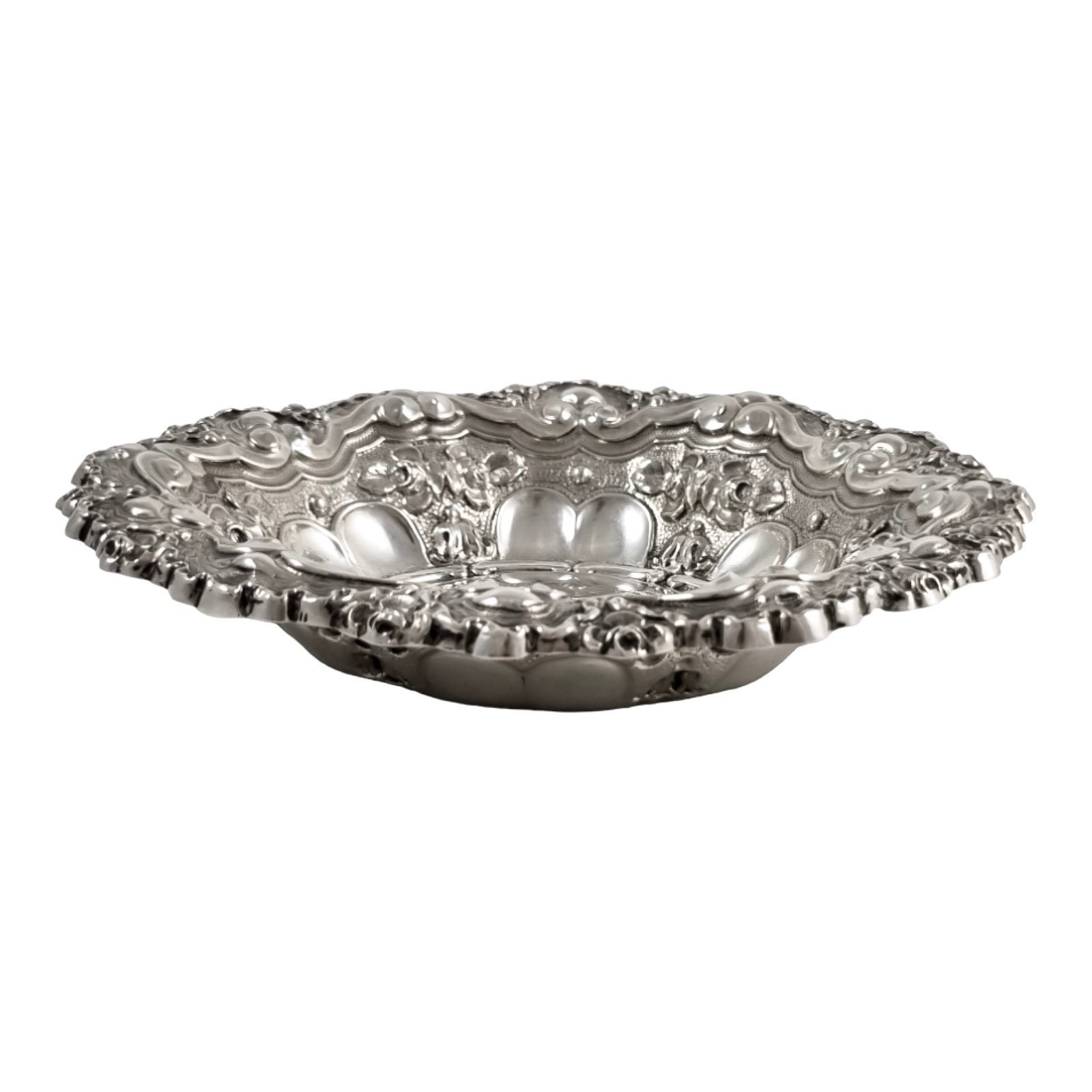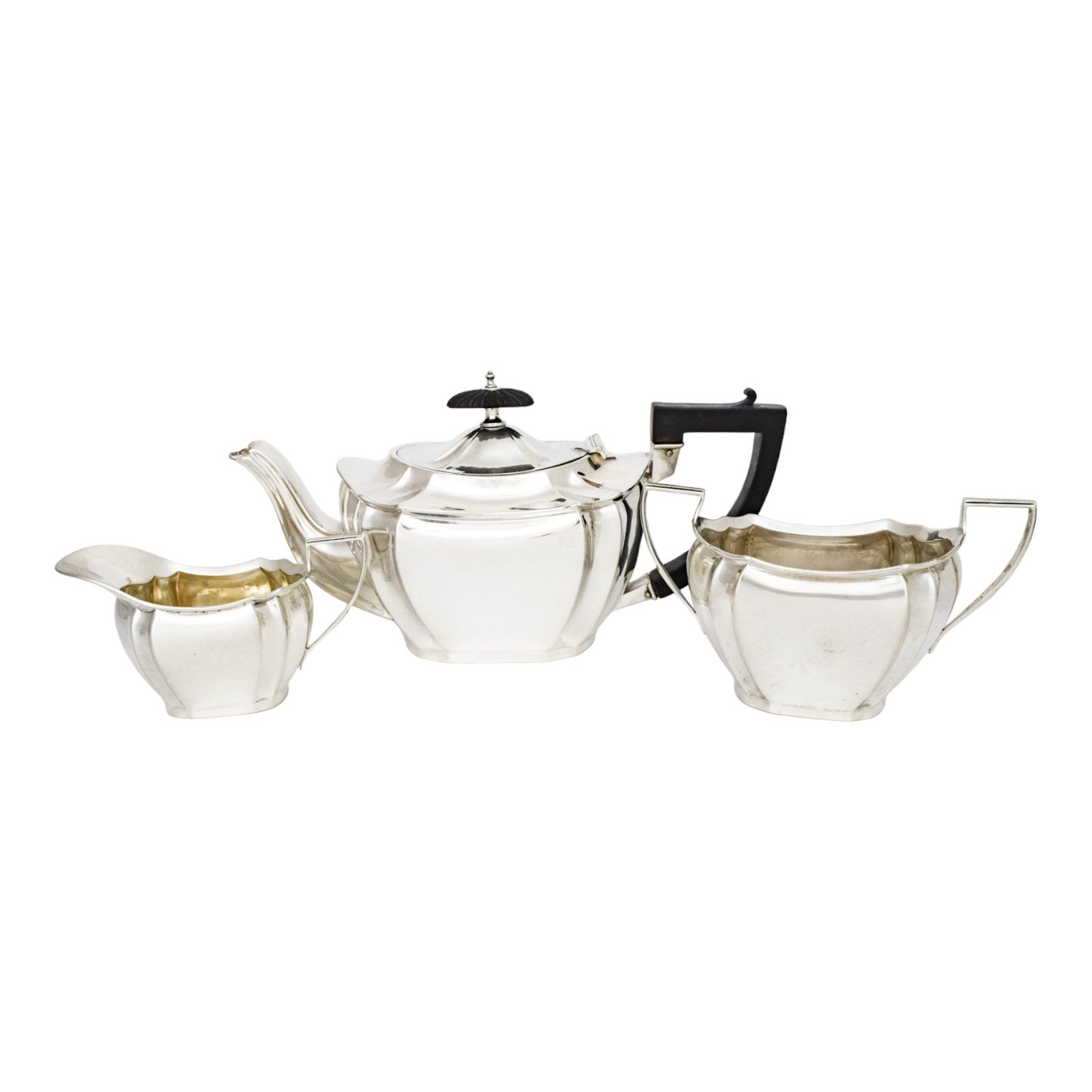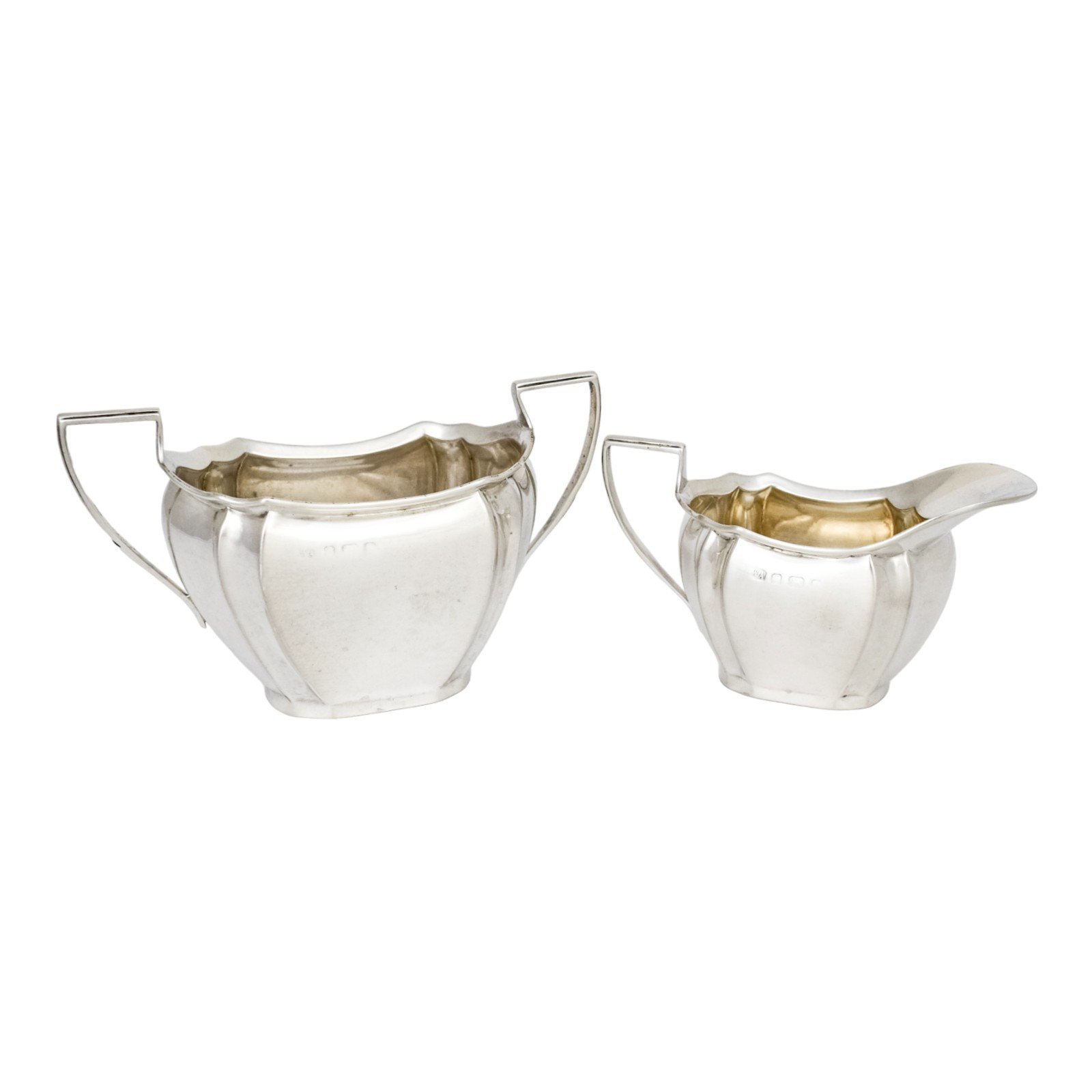 Image 1 of 13
Image 1 of 13

 Image 2 of 13
Image 2 of 13

 Image 3 of 13
Image 3 of 13

 Image 4 of 13
Image 4 of 13

 Image 5 of 13
Image 5 of 13

 Image 6 of 13
Image 6 of 13

 Image 7 of 13
Image 7 of 13

 Image 8 of 13
Image 8 of 13

 Image 9 of 13
Image 9 of 13

 Image 10 of 13
Image 10 of 13

 Image 11 of 13
Image 11 of 13

 Image 12 of 13
Image 12 of 13

 Image 13 of 13
Image 13 of 13














George IV vinaigrette in sterling silver gilt with floral engraving and vacant cartouche, John Thropp, 1822
This elegant Georgian vinaigrette was made by the silversmith John Thropp and is fully hallmarked for Birmingham, 1822. Crafted from sterling silver, the rectangular case is decorated with finely engraved floral and foliate scrollwork surrounding a plain cartouche. The sides and base are embellished with delicate linear borders, reflecting the restrained refinement of early 19th-century Neoclassical design.
The hinged lid opens to reveal a pierced and engraved inner grille, richly finished in bright gilt vermeil. The lattice of diamond-shaped apertures highlights the precision of the craftsmanship, while the vibrant gilded interior provides a striking contrast to the cool silver exterior.
Vinaigrettes of this period were indispensable personal accessories, carried to revive the senses or to mask unpleasant odours. This example would have been worn on a chatelaine or tucked discreetly into a pocket or reticule.
A fine example of Georgian period silver, this vinaigrette combines decorative elegance with practical purpose. It is a highly collectable piece, ideal for collectors of antique silver, Georgian accessories, and early English objets de vertu.
Weight: 13.57 g
Dimensions: 1 cm × 3 cm × 2 cm
Very good antique condition. The plain side has a shallow indent and a small ding. The lid does not sit fully flush. There are tiny dings to the engraved side (not visible under the design). The pin securing the grille needs to be replaced. Displays beautifully with bright vermeil gilding and crisp engraved detailing.
This elegant Georgian vinaigrette was made by the silversmith John Thropp and is fully hallmarked for Birmingham, 1822. Crafted from sterling silver, the rectangular case is decorated with finely engraved floral and foliate scrollwork surrounding a plain cartouche. The sides and base are embellished with delicate linear borders, reflecting the restrained refinement of early 19th-century Neoclassical design.
The hinged lid opens to reveal a pierced and engraved inner grille, richly finished in bright gilt vermeil. The lattice of diamond-shaped apertures highlights the precision of the craftsmanship, while the vibrant gilded interior provides a striking contrast to the cool silver exterior.
Vinaigrettes of this period were indispensable personal accessories, carried to revive the senses or to mask unpleasant odours. This example would have been worn on a chatelaine or tucked discreetly into a pocket or reticule.
A fine example of Georgian period silver, this vinaigrette combines decorative elegance with practical purpose. It is a highly collectable piece, ideal for collectors of antique silver, Georgian accessories, and early English objets de vertu.
Weight: 13.57 g
Dimensions: 1 cm × 3 cm × 2 cm
Very good antique condition. The plain side has a shallow indent and a small ding. The lid does not sit fully flush. There are tiny dings to the engraved side (not visible under the design). The pin securing the grille needs to be replaced. Displays beautifully with bright vermeil gilding and crisp engraved detailing.
This elegant Georgian vinaigrette was made by the silversmith John Thropp and is fully hallmarked for Birmingham, 1822. Crafted from sterling silver, the rectangular case is decorated with finely engraved floral and foliate scrollwork surrounding a plain cartouche. The sides and base are embellished with delicate linear borders, reflecting the restrained refinement of early 19th-century Neoclassical design.
The hinged lid opens to reveal a pierced and engraved inner grille, richly finished in bright gilt vermeil. The lattice of diamond-shaped apertures highlights the precision of the craftsmanship, while the vibrant gilded interior provides a striking contrast to the cool silver exterior.
Vinaigrettes of this period were indispensable personal accessories, carried to revive the senses or to mask unpleasant odours. This example would have been worn on a chatelaine or tucked discreetly into a pocket or reticule.
A fine example of Georgian period silver, this vinaigrette combines decorative elegance with practical purpose. It is a highly collectable piece, ideal for collectors of antique silver, Georgian accessories, and early English objets de vertu.
Weight: 13.57 g
Dimensions: 1 cm × 3 cm × 2 cm
Very good antique condition. The plain side has a shallow indent and a small ding. The lid does not sit fully flush. There are tiny dings to the engraved side (not visible under the design). The pin securing the grille needs to be replaced. Displays beautifully with bright vermeil gilding and crisp engraved detailing.
Scent boxes, peppermint boxes, loddereins, pomanders, and pouncet boxes were used across different periods to hold aromatic substances. The earliest examples used oranges, believed to safeguard against infection. By the Georgian era, aromatic vinegars became popular, and a tiny sponge soaked in vinegar was kept under a pierced grill inside small boxes, now called vinaigrettes. The term "vinaigrette" entered common use around the 1780s.
Initially used by both men and women, vinaigrettes became almost exclusively feminine by the 1820s. Carried in a pocket, reticule, or attached to a chatelaine, they provided immediate access to restorative vapours when required, especially important in an age of tight corsetry and frequent fainting. The hinged lid allowed the vinaigrette to be opened swiftly, much like a snuff box.














































